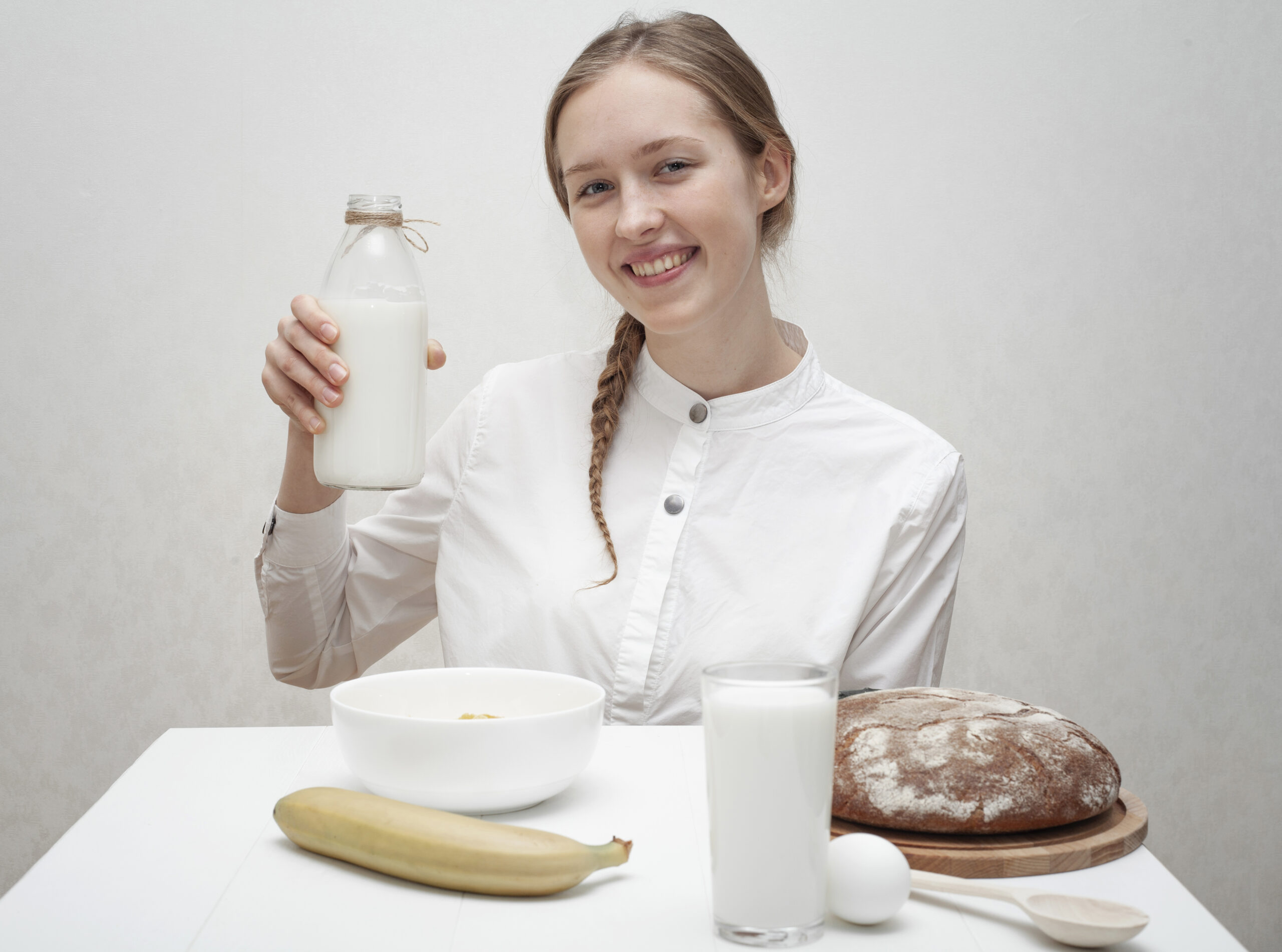Calcium Supplements
Adapted from my first book, Breastfeeding Works! Even with Allergies

When there is a need for dairy exclusion, many mothers’ first reaction is, “But what about the calcium I need?”
Dairy advertisements have emphasised the supposed value of the calcium in cow milk products for so many years that there is a public perception of their absolute nutritional necessity. This does not make sense even in human evolutionary terms, however, since about 70% of humanity evolved on the planet with NO milk (or milk products) in their diets in their entire lifetimes – with the single exception of the breast milk their mothers fed them. Even today, most of the world’s children will be breastfed for an average of 2 – 7 years. This can be regarded as the human evolutionary norm.
These non-milk-consuming populations have never been subject to the insidious epidemics of osteoporosis now seen in the Western world. Research in the last few decades has clearly implicated the modern Western diet as the cause of this osteoporosis nightmare.
The osteoporosis problem can be related to a number of factors:
- greatly increased dietary consumption of phosphorus, especially carbonated drinks
- lack of sufficient dietary fats
- insufficient fat soluble vitamins
- increased consumption of processed dairy foods
- large intakes of animal protein
- caffeine intake
- sedentary life styles
- artificial feeding of babies
- deranged physiology influenced by life style and various environmental exposures (chemicals, drugs, hormone additives in foods/cosmetics etc)
In short, to guarantee osteoporosis by the age of 40, you would:
- be artificially fed from birth
- have an extremely low fat diet
- have large amounts of very lean animal protein (including low fat, processed cow milk products)
- eat negligible amounts of fruit or vegetables
- have lots of carbohydrates, especially potatoes, grains and processed sugars
- smoke cigarettes
- avoid sun exposure
- drink lots of soft drink
- drink lots of coffee
- avoid exercise
- artificially feed your babies
Which other mammals may develop osteoporosis?
Considering the osteoporosis problem purely from the perspective of diet, however, other mammal’s diets best illustrate the issues involved.
Vets never expect to treat herbivore mammals for osteoporosis. This includes elephants, rhinos, hippos, giraffes, camels, horses and cows. All of these animals have far greater skeletal masses to maintain than humans do. They rely on calcium uptake from the plants they eat to achieve this. On paper, their intake of calcium looks relatively modest compared with that of the carnivores.
On the other hand, a lion is potentially at high risk of osteoporosis. If it has a mouth injury, or loses too many teeth to be able to crunch up the bones that convert to alkali in its body, its huge calcium intake from just meat alone does it no good. Its difficulty is the concentration of nutrients from food sources high up the food chain. It is truly a problem of too much of a good thing.
Calcium absorption is not a simple matter
X grams of calcium ingested in food = X grams of calcium absorbed and used in the body
This is, however, a very simplistic and incorrect view of what actually happens.
At gut level, human calcium absorption is influenced by a number of factors. It is necessary for fat to be present, because the fat-soluble vitamins A and D are crucial to the process. If these vitamins are not readily supplied, very little calcium will be absorbed. Immediately, it can also be seen that low-fat dairy foods contribute insignificantly as calcium sources.
Sun exposure on human skin helps us to make our own Vitamin D, so we do not have to entirely rely on dietary sources of Vitamin D. An emerging problem in some cold northern hemisphere countries has been Vitamin D deficiency in black Islamic women who robe themselves in traditional Islamic clothing. Head-to-toe clothing plus black skin permits only a small amount of ultraviolet exposure from the sun, often not enough for sufficient Vitamin D synthesis. Under the extra physiological demands of pregnancy and lactation, this situation may become critical, and Vitamin D supplementation may be absolutely crucial for the health of mother and child.
Phosphorus is the problem, not calcium
However, the major obstacle posed by the Western diet is its overload of phosphorus. In this, we share the same problem as a toothless lion.
All food that comes from plants or animals contains calcium. Calcium is about the third most common element in the Earth’s crust. Thanks to plant uptake, it is impossible not to consume all the calcium that could possibly be needed.
Therefore there is calcium in all fruit, vegetables and cereal foods. The further up the food chain our food is sourced, the more calcium will be concentrated within its cells. Hence, meats, milk products, poultry, eggs and seafood will have far higher calcium levels than plant foods.
On the surface, these higher calcium concentrations might seem to be the best ones to eat to guarantee the highest amounts of calcium absorbed by the body. The obstacle to this is that phosphorus is also concentrated in these foods in the same manner as is calcium.
Phosphorus is an important component of our bones and teeth. However, when our diets are oversupplied with it, phosphorus begins to pose a threat to our ongoing bone health. Firstly, it oxidises as phosphate and binds calcium in the gut as the very stable, indigestible molecule, calcium phosphate. This means that significant amounts of calcium in the gut never make it into our bodies to begin with. Secondly, absorbed phosphorus converts to phosphoric acid in our bodies.
Phosphoric acid is highly acidic. It is capable of digesting bones and teeth. Try dropping a tooth into a glass of cola – it will be gone a few days later thanks to its phosphoric acid content.
If our diets include a generous daily supply of fruits and vegetables (most of which convert to alkali in our bodies) enough of the impact of phosphoric acid may be negated so that our bones maintain bone health. Otherwise, we can expect our bones to steadily lose the battle against phosphoric acid over the decades, and we will succumb to osteoporosis.
With dietary considerations, the most important lessons we need to learn are that we protect ourselves best by practising moderation with intakes of foods that are most potentially damaging to us. There is no such thing as “the perfect food”, including cow milk products. (The single exception is that human milk is inarguably the perfect food for human babies.)
There are only three nutrition guidelines:
- Have plenty of variety in your diet
- Practice moderation in what you eat and drink
- Avoid processed foods
Non-foods such as soft drink ideally should be consumed rarely or, even better, not at all. A glance down whole supermarket aisles of soft drinks is enough to prove that these products achieve consistently high sales turnover all year round. In fact, they are one of the top three sales items in the supermarket, along with cigarettes.
What role do “calcium fortified” soy milks have in dietary intakes?
Soy “milk” has managed to achieve a “healthy food” persona. It has also acquired an unearned reputation as a substitute for dairy foods when cow milk protein allergy is a problem. In fact, soy proteins are as likely to cause allergy reactions as are dairy foods. This is why the Australian Academy of Paediatrics and Childhood does not recommend the use of soy formulas when artificially fed babies are allergic to cow milk formulas.
Cirumstantial evidence for claims that large dairy intakes reduce the risk of osteoporosis?
The osteoporosis epidemic is concentrated in Western countries which have huge consumption rates of dairy foods. Therefore there is no circumstantial evidence for the idea that having large amounts of dairy foods reduces osteoporosis risk in these populations.
Furthermore, unless pregnant or lactating, all adults constantly excrete calcium through the kidneys because more dietary calcium is absorbed into the body than it can safely use.
Consumers are entitled to expect truthful claims in advertising material
There is now a large undeniable body of research evidence from the last 20 years to readily support this picture of the Western calcium/phosphorus trap. In this new millennium, there is a catch phrase amongst Western health professionals:
Industry needs to become far more accountable, with a requirement to be truthful about its product claims. “Evidence based practice” for advertisers means that what is claimed is based on the best available research evidence, preferably independent research (that is, not funded by those commercial interests which may possibly influence its results.) Only then are the best interests of consumers and the whole community served.
